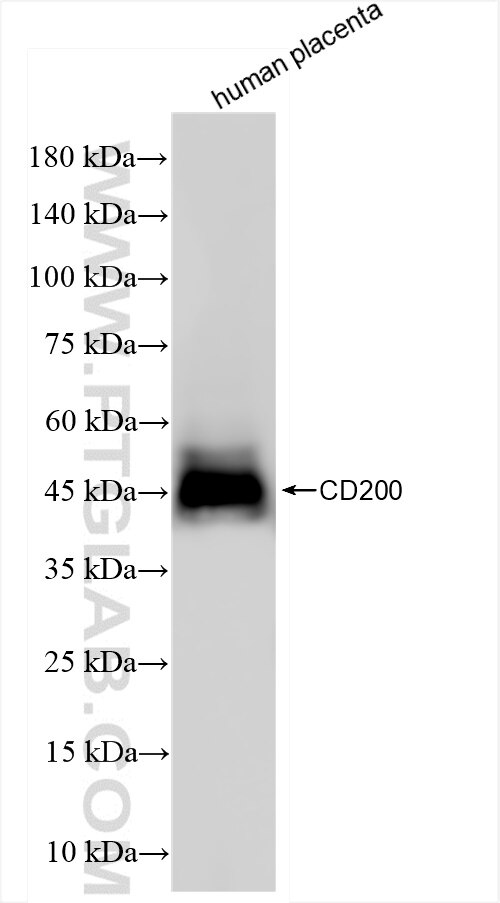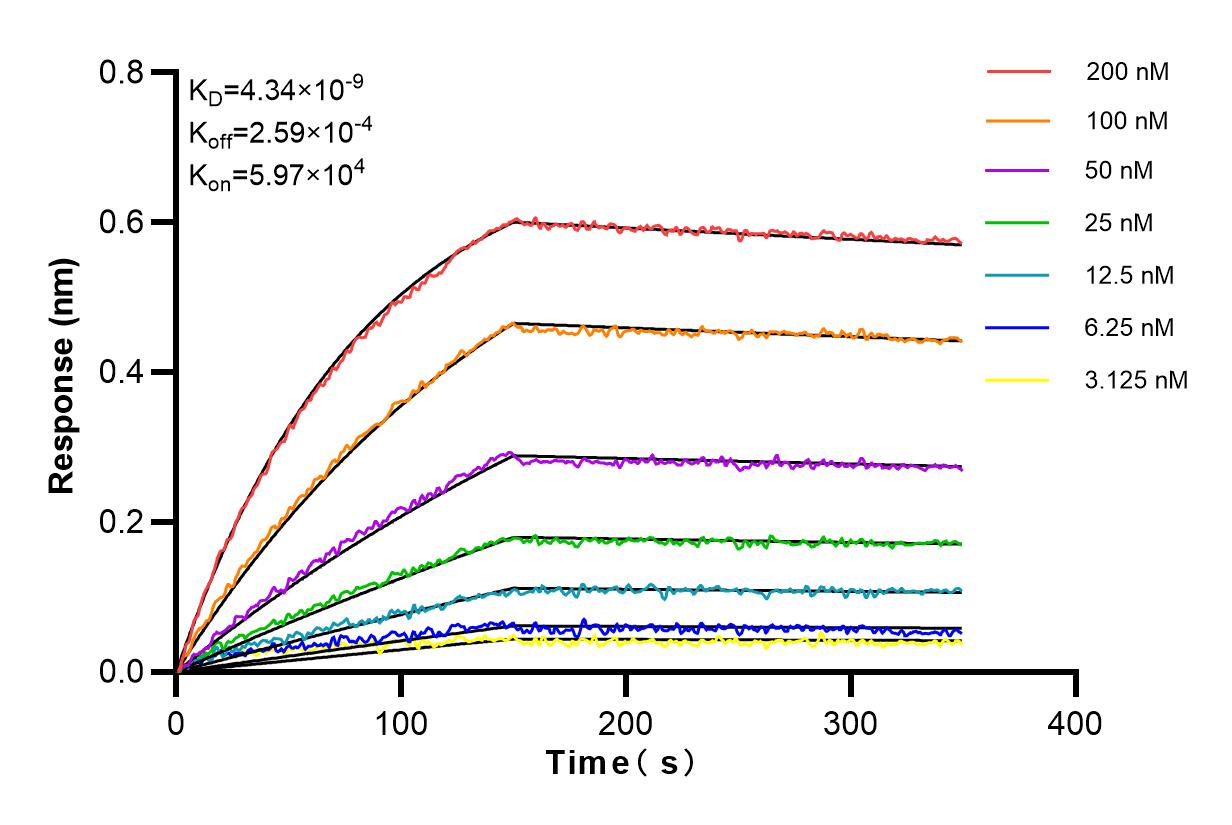Tested Applications
| Positive WB detected in | human placenta tissue |
Recommended dilution
| Application | Dilution |
|---|---|
| Western Blot (WB) | WB : 1:500-1:2000 |
| It is recommended that this reagent should be titrated in each testing system to obtain optimal results. | |
| Sample-dependent, Check data in validation data gallery. | |
Product Information
84244-2-RR targets CD200 in WB, ELISA applications and shows reactivity with human samples.
| Tested Reactivity | human |
| Host / Isotype | Rabbit / IgG |
| Class | Recombinant |
| Type | Antibody |
| Immunogen | Recombinant Protein Predict reactive species |
| Full Name | CD200 molecule |
| Calculated Molecular Weight | 269 aa, 30 kDa |
| Observed Molecular Weight | 45 kDa |
| GenBank Accession Number | BC022522 |
| Gene Symbol | CD200 |
| Gene ID (NCBI) | 4345 |
| RRID | AB_3671795 |
| Conjugate | Unconjugated |
| Form | Liquid |
| Purification Method | Protein A purification |
| UNIPROT ID | P41217 |
| Storage Buffer | PBS with 0.02% sodium azide and 50% glycerol, pH 7.3. |
| Storage Conditions | Store at -20°C. Stable for one year after shipment. Aliquoting is unnecessary for -20oC storage. 20ul sizes contain 0.1% BSA. |
Background Information
CD200, also known as OX2, is a type I transmembrane glycoprotein that belongs to the immunoglobulin superfamily (PMID: 3032785). It contains two extracellular immunoglobulin domains, a transmembrane and a cytoplasmic domain. CD200 is expressed on a variety of cell types, including thymocytes, B lymphocytes, a subset of T lymphocytes, follicular dendritic cells, neurons, and endothelial cells (PMID: 3032785; 10981966). CD200 binds to its receptor, CD200R, which is primarily expressed by myeloid and T cell lineage (PMID: 15187158). The CD200-CD200R interaction plays a role in immunosuppression and suppression of anti-tumor immune responses (PMID: 22020332).
Protocols
| Product Specific Protocols | |
|---|---|
| WB protocol for CD200 antibody 84244-2-RR | Download protocol |
| Standard Protocols | |
|---|---|
| Click here to view our Standard Protocols |





